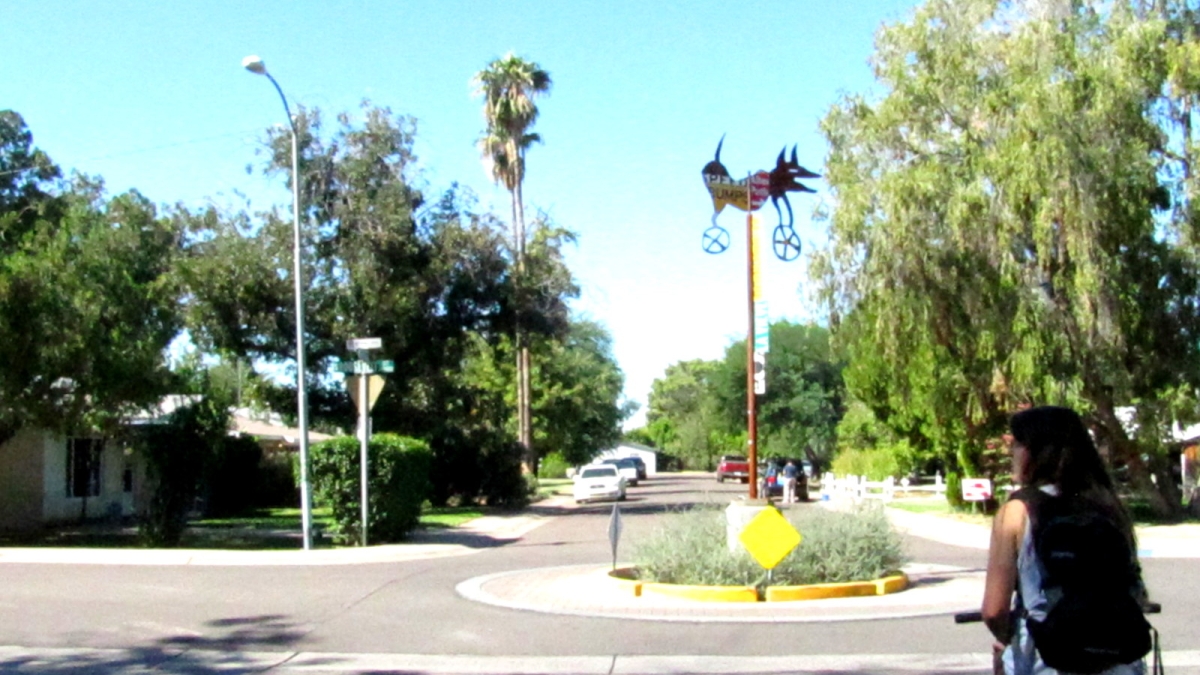National exhibit to feature ASU students' sustainable urban design research

Biophilia: not a word you hear every day. But the concept impacts our everyday life.
The great naturalist E.O. Wilson popularized biophilia, or "the urge to affiliate with other forms of life,” in his book, "Biophilia." Wilson says people have an innate connection to, and need for nature in their lives to be happy, healthy and productive. Today, architects, designers and builders are incorporating the concept into our built environments, otherwise known as biophilic cities.
“When applying biophilia to cities, we look at the relationship of nature in cities, the sensitivity of how we treat nature and the features that give us an appreciation of nature,” says David Pijawka, a senior sustainability scientist in Arizona State University’s Global Institute of Sustainability and a professor and associate director of the School of Geographical Sciences and Urban Planning.
In fall 2012 and spring 2013, the honors students in Pijawka’s Sustainable Cities course explored urban biophilia through the Biophilic Cities project, an initiative created by the University of Virginia’s Timothy Beatley. Pijawka partnered with Beatley and School of Sustainability master’s student Dorothy Trippel to design the course that investigated sustainability issues in urban cities.
“I wanted the students to get really excited about sustainability,” Pijawka says. “And Tim is one of the foremost scholars in sustainability. This way, the students could put the theory into practice.”
Beatley is analyzing Phoenix’s biophilic design, along with cities as far as Oslo, Norway and as close as New York City. Phoenix, a place where triple-digit temperatures are the norm and heavy smog creates watercolor sunsets, can gain many health and psychological benefits through biophilic design.
“Phoenix’s sprawl takes people out of nuclear neighborhoods and makes them spend more time in the car,” says Trippel, who completed her thesis as a teaching assistant for the course. “This means more greenhouse gas emissions, increased urban heat island effect, less time at home with family and less time outside. Biophilic design is one lens to approach designing built environments that connect us with nature and with each other.”
The honors students formed groups and investigated specific biophilic research questions for six Phoenix locations: the McDowell Sonoran Preserve, the Maple-Ash neighborhood, South Mountain Park, Papago Park, downtown vacant lots and the Valley transect. They gathered field data from surveying park-goers, city dwellers and community members, and asked the public such questions as why they use the parks, how nature makes them feel and why they chose to live where they live. They also identified unique examples of biophilic design at their research sites and considered what insight and lessons they might offer to other parks, preserves and neighborhoods.
The honors students presented the results to their peers through collaborative videos and photo presentations, of which will be displayed during this October’s Biophilic Cities Launch exhibit at the University of Virginia.
The Biophilic Cities Launch exhibit is part of a larger peer networking event organized by the Biophilic Cities project. Such prominent experts as Yale University’s Stephen R. Kellert and UC Berkeley’s Jennifer Wolch are keynote speakers that will likely take part in the multi-sensory and interactive exhibit. The goal of the event is to bring together thought leaders, stakeholders and city representatives to share lessons learned and explore future directions.
“Students got to contribute to a real-world project,” Trippel says. “Choosing a topical focus for their project and taking responsibility for teamwork and project management gave the students the chance to self-direct their learning and practice research skills. Studying sustainability problems in real-world places helped the students develop knowledge and skills for problem-solving that they can turn into sustainability action.”
In this aspect, the students defined their own version of sustainability and thought critically about the environment around them.
“I wanted the students to understand the different frameworks of sustainability,” Pijawka says. “We can’t think through disciplines anymore; we have to think of the connections, even the local to the global.”
“Biophilia is a ‘hook’ for sustainability; students often engage with this concept really quickly because they can think about themselves and how nature plays a role in their life,” Trippel says.
One student, School of Sustainability sophomore Victoria Comeaux, gained a more thorough appreciation for the connections we have to the natural world.
“Learning about biophilic cities helped me understand just how important the human-environment relationship is to making an area more sustainable,” she says. “We have grown accustomed to living in a world where cities are meccas of concrete and metal that are completely separated from the natural environment. Having a relationship with nature encourages stewardship and social ecology, leading to a protected and well-cared for Earth.”
As Pijawka says: “If we don’t have appreciation for nature, how are we going to sustain it?”